The reports on this page provide guidance on ethnic, religious and linguistic minorities’ rights and protections typically found in constitutions.
Selected Materials
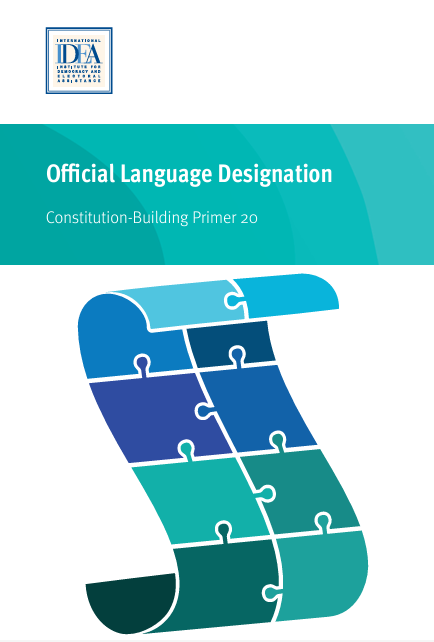
This Constitutional Design Primer from International IDEA addresses the role of language in constitutional design, and the key considerations that arise in multilingual states.
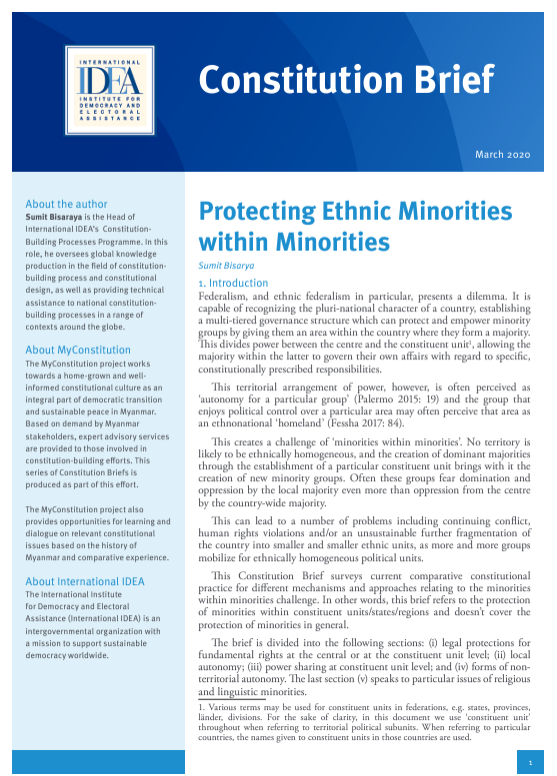
This Constitutional Brief from International IDEA surveys comparative constitutional practice relating to the minorities within minorities challenge – that is, the protection of minorities within constituent units in multi-level governance systems.
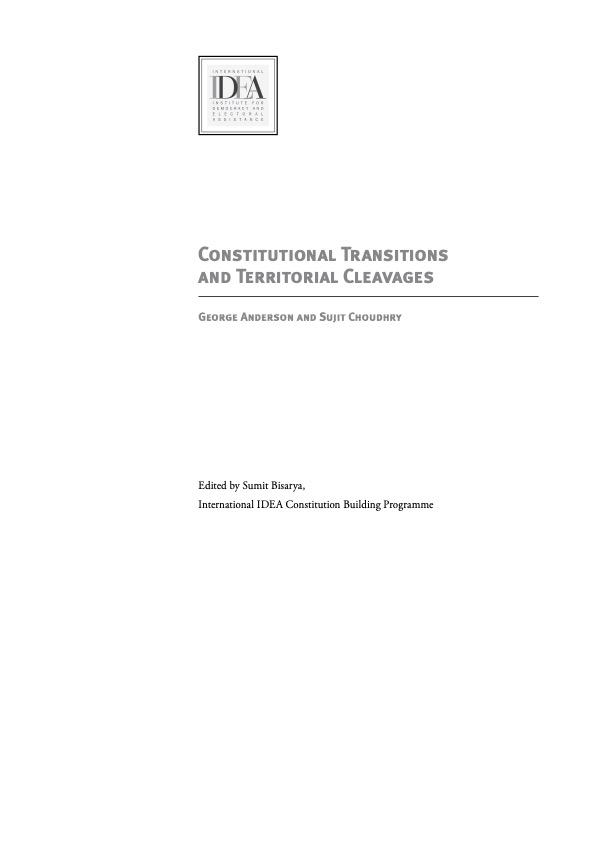
This report examines the implications of territorially concentrated divided communities (minorities or otherwise) on constitution making through three inquiries:  (1) what factors will inform the mobilization of territorially-based interests (2) how might these interests impact the design of the constitution making process and (3) how might they impact the content of the constitution itself.  The report is extremely useful in analyzing the politics and dynamics of constitutional negotiation in territorially-based divided societies.
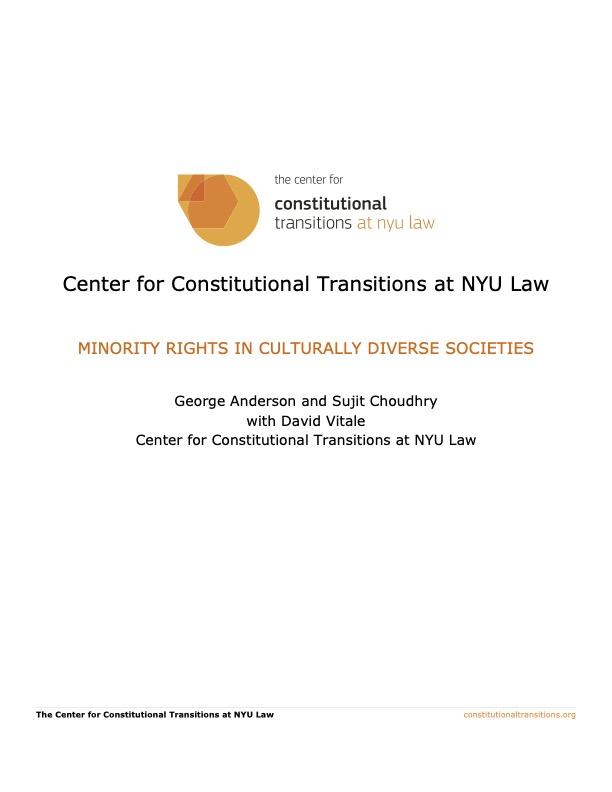
This paper discusses the nature of different minorities that may be politically important, and then considers different approaches to dealing with the constitutional recognition of minorities, the protection of their basic human rights and the entrenchment of specific minority rights, as well as the participation of minorities in government.
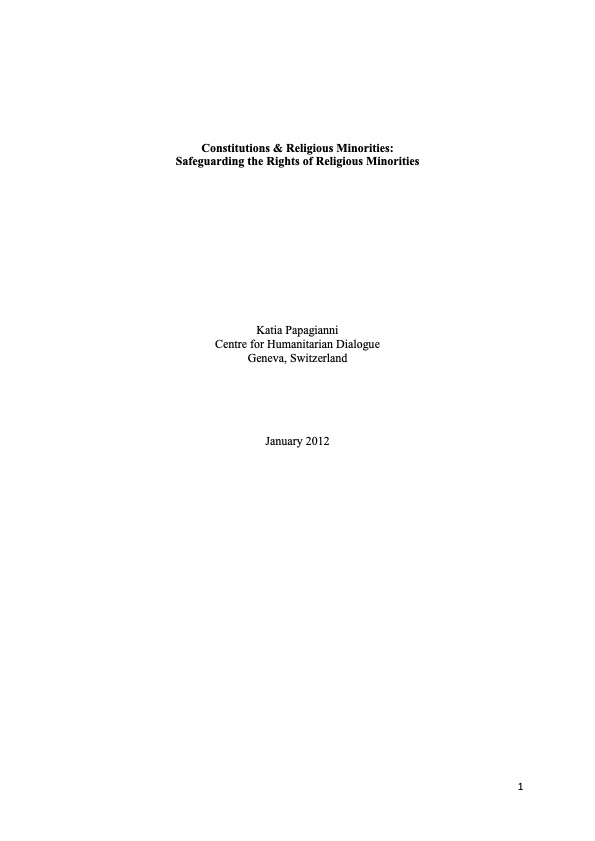
This paper discusses the role of constitutions and opportunities provided by constitution-drafting in democratic consolidation with respect to the protection of religious minorities. The author takes the position that the constitution-drafting process is a rare opportunity for a detailed discussion between the state and its people, which can give rise to important give-and-takes that could result in both short-term conflict resolution and long-term stability of state institutions. The paper also briefly examines international standards related to religious minorities, including the Universal Declaration of Human Rights, the International Covenant on Civil and Political Rights, and the Declaration on the Elimination of All Forms of Intolerance and Discrimination. The paper ends by presenting the case of Indonesia as an example of how religious minorities can be accommodated.
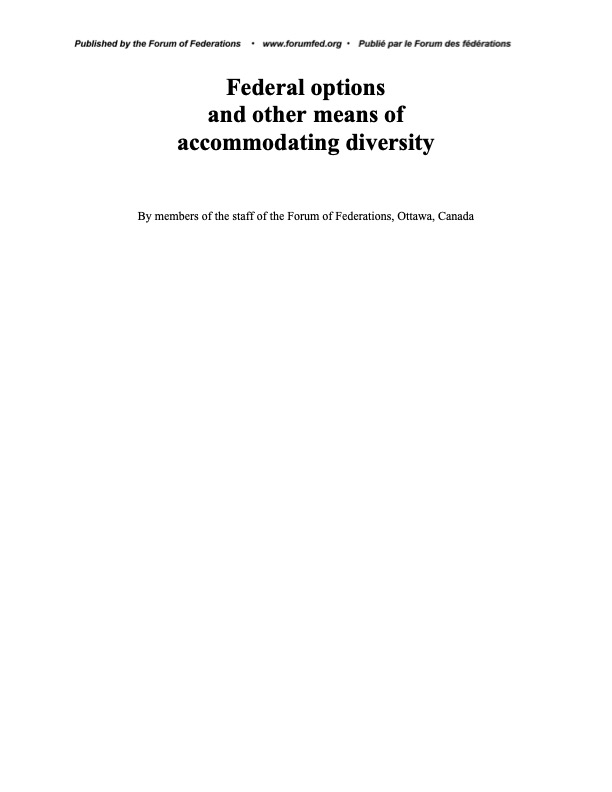
This paper is aimed at assisting persons engaged in nation-building, particularly in post-conflict states. Specifically it is meant to provide insight and examples into the ways and means of recognizing and accommodating multiple national groups living in a specific country. The paper highlights the ways in which ethnic diversity may present itself and the possibility of various groups not being geographically concentrated. The paper then canvasses the variety of means a country can use to address diversity, including: minority language and cultural rights, assimilation, exclusion and integration, and devolution. The last part of the paper looks at federalism in detail and how it accommodates diversity. Specifically, the paper highlights the characteristics of federal constitutions, basic features and division of roles and responsibilities between orders of government, areas of cooperation between orders of government, representation of constituent units at the federal level, the guarantee of rights for minorities, the utility of asymmetrical federalism, the possibility of secessionism, and the use of a neutral referee (i.e. the courts) to resolve any disagreement. The paper ends with a series of questions to be asked when considering how to craft institutions to accommodate ethnic diversity.
